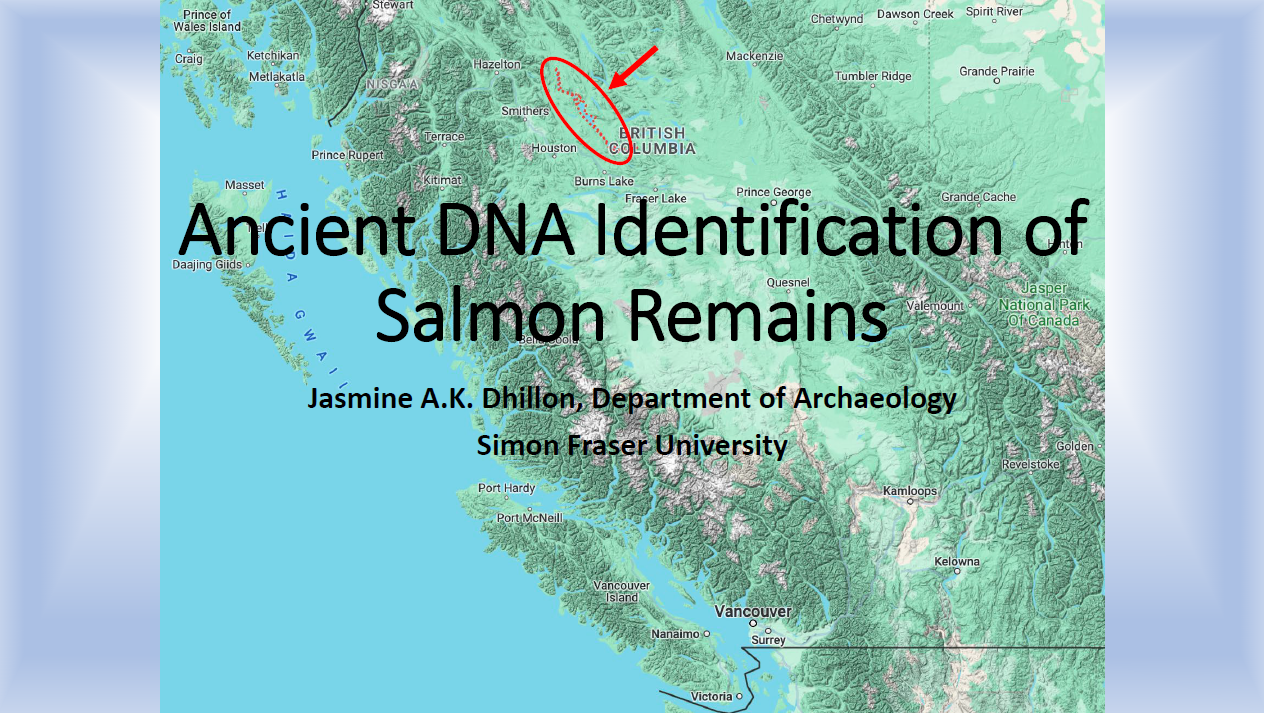Ancient DNA Identification of Salmon Remains
Main Article Content
Abstract
Identifying the species of animals represented by zooarchaeological remains is essential in studying past human and animal interactions. Salmon bones are tiny and often fragmented in archaeological contexts, causing difficulty in determining identification to the species level using only the morphological approach. Salmon harvesting practices can be illuminated through the identification of salmon species using ancient DNA (aDNA). This pilot study analyzed aDNA from eight vertebral salmon bone samples that were excavated, in north-central British Columbia, from conditions promoting excellent DNA preservation. These samples were prepared through various laboratory processes in order to clean and extract ancient DNA, which involved procedures that were conducted according to protocols to minimize as much contamination as possible. Sequence results were aligned and two phylogenetic trees were constructed using cytochrome b and D-loop (control region) sequences. Both phylogenetic trees showed consistent results. Current phylogenetic analysis reveals that of the eight samples, seven clustered with sockeye salmon (Oncorhynchus nerka) and one clustered with chinook salmon (Oncorhynchus tshawytcha), demonstrating that ancient DNA analysis can serve as a powerful tool in providing an important line of evidence that helps to identify ancient fish remains and to reconstruct past fishery strategy. Mitochondrial DNA (mtDNA) sequences (cytochrome b and D-loop control region) were successfully recovered from all ancient remains, indicating a promising preservation condition for further studies.
Article Details

This work is licensed under a Creative Commons Attribution-NonCommercial-NoDerivatives 4.0 International License.
References
Morin, J., Royle, T. C. A., Zhang, H., Speller, C., Alcaide, M., Morin, R., Ritchie, M., Cannon, A., George, M., George, M., & Yang, D. (2021). Indigenous sex-selective salmon harvesting demonstrates pre-contact marine resource management in Burrard Inlet, British Columbia, Canada. Scientific Reports, 11(1), 21160–21160. https://doi.org/10.1038/s41598-021-00154-4
Rahemtulla, F. (2019). The Babine Archaeology Project: Discovery of a Rare Wet Site on the Babine River, North-Central British Columbia. In Waterlogged: Examples and Procedures for Northwest Coast Archaeologists, edited by Kathryn Bernick, pp. 159–168. WSU Press, Pullman, WA.
Royle, T. C. A., Sakhrani, D., Speller, C. F., Butler, V. L., Devlin, R. H., Cannon, A., & Yang, D. Y. (2018). An efficient and reliable DNA-based sex identification method for archaeological Pacific salmonid (Oncorhynchus spp.) remains. PloS One, 13(3), e0193212–e0193212. https://doi.org/10.1371/journal.pone.0193212
Yang, D. Y., Eng, B., Waye, J. S., Dudar, J. C., & Saunders, S. R. (1998).Technical note: improved DNA extraction from ancient bones using silica-based spin columns. American Journal of Physical Anthropology, 105(4), 539–543. https://doi.org/10.1002/(SICI)1096-8644(199804)105:4<539::AID-AJPA10>3.0.CO;2-1
Yang, D. Y., Cannon, A., & Saunders, S. R. (2004). DNA species identification of archaeological salmon bone from the Pacific Northwest Coast of North America. Journal of Archaeological Science, 31(5), 619–631. https://doi.org/10.1016/j.jas.2003.10.008
Yang, D. Y., & Watt, K. (2005). Contamination controls when preparing archaeological remains for ancient DNA analysis. Journal of Archaeological Science, 32(3), 331–336. https://doi.org/10.1016/j.jas.2004.09.008

